Tested: 2020 Alfa Romeo Stelvio Quadrifoglio Begs to Be Driven Hard
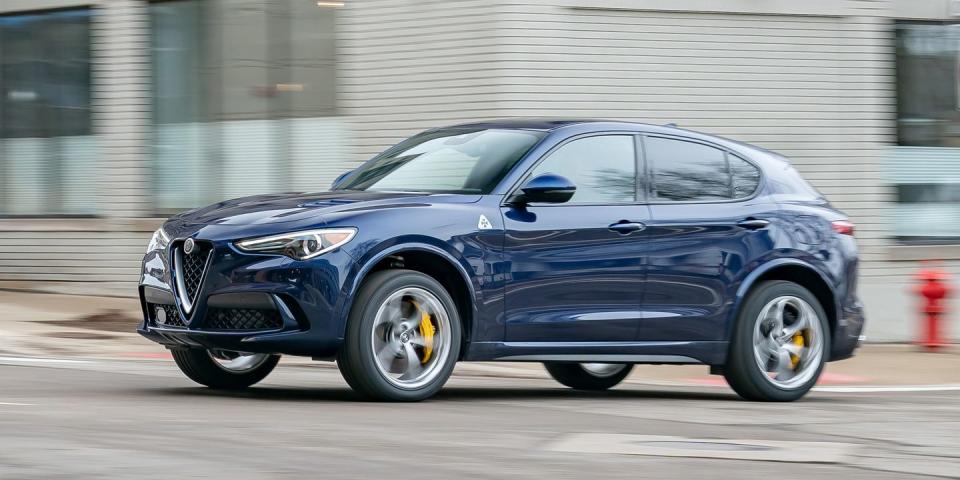
Twist the Alfa Romeo Stelvio Quadrifoglio's drive mode selector into Race, which dials back the stability control and dials up everything else, and a message appears on the gauge cluster screen: "Best Race Experience With Shifter in Manual." This, friends, is wise advice.
If Dynamic or Race modes are never called upon, if the four exhaust cannons are never uncorked, and if the driver isn't interested in switching the transmission into manual mode and playing maestro to the trombone-tinged blat of the 505-hp twin-turbo V-6 with the oversized, column-mounted—hurrah—metal shift paddles, the Stelvio will not impress. It's just a fuel-guzzling compact luxury SUV with a lumpy idle and a smallish back seat.
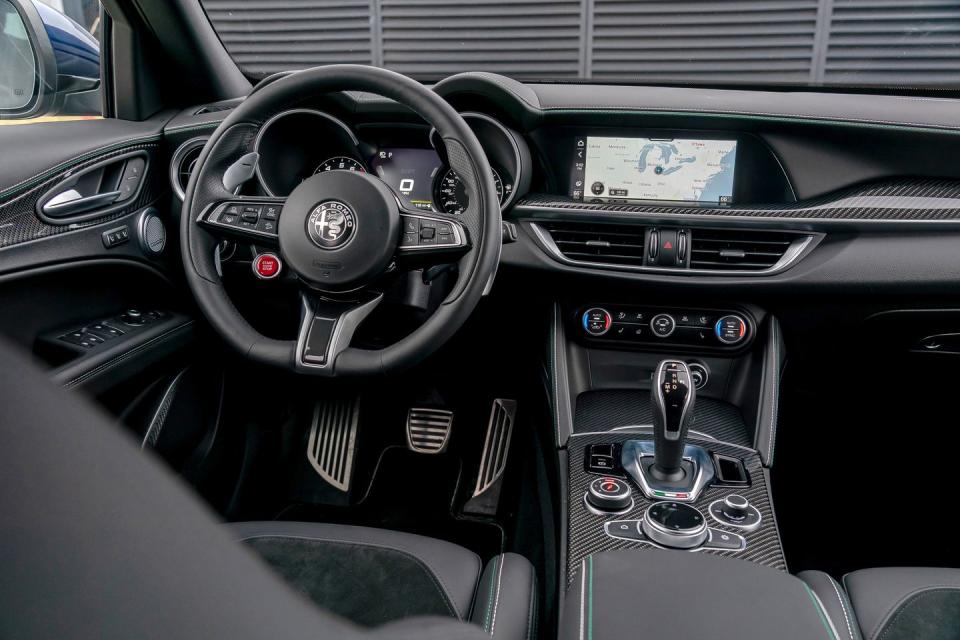
However, if you're like us, you'll prioritize the tingles that come through the Stelvio's quick-cutting steering wheel more than the uneven warmth of its heating function. (It's focused at the top and bottom of the wheel, with almost none at the nine- and three-o'clock positions.) You'll drive hard enough to appreciate its neutral cornering balance at its high, 0.94-g grip limit. And you'll be the kind of person who will perform a brake-torque launch on a clear stretch of road, where the Stelvio will spin its rear tires before heaving off the line to a 3.3-second run to 60 mph, its all-wheel-drive system enabling a better launch and initial sprint than the Stelvio's rear-drive Giulia sedan counterpart.
Do all of this, and the Stelvio in high-performance Quadrifoglio trim is magnificently right. The kind of rightness that allowed it to prevail over its rivals in a comparison test and to run just four percent slower than its 530-pound-lighter Giulia sedan sibling at our annual Lightning Lap track shootout at Virginia International Raceway. The truth is that the Stelvio is more of a Giulia wagon, showing four and a half inches of wheel well, than a SUV. And we love wagons.
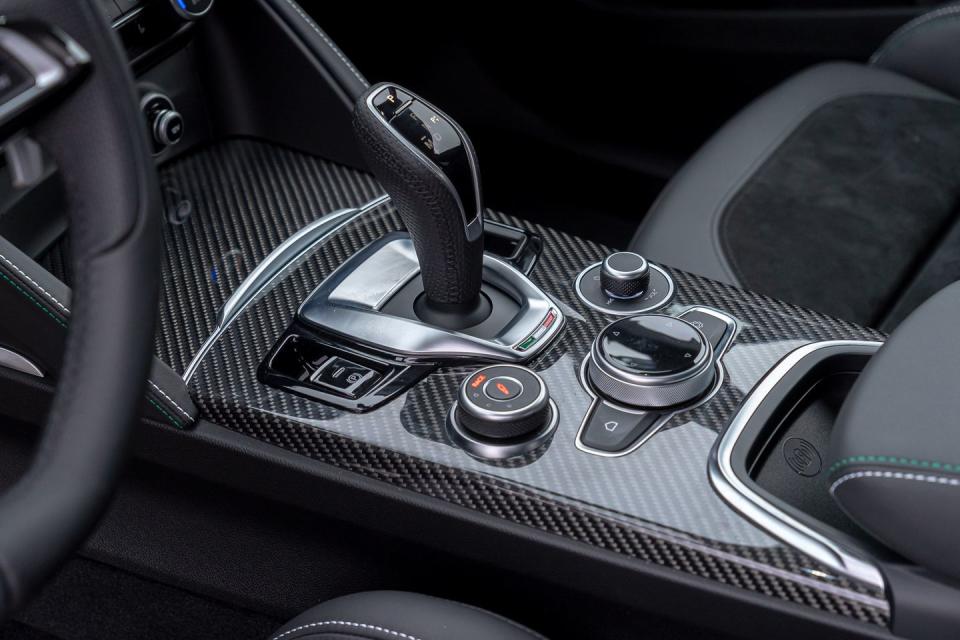
Meaningful Updates
For the 2020 model year, both the Stelvio and Giulia receive a number of small updates. These include interior-material upgrades to right some past wrongs—such as a stitched-leather surround for the shift lever and new finishes for the bezels and knobs on the center console—as well as new lane-centering-capable adaptive cruise control, optional wireless cell-phone charging, new center- and gauge-cluster screens, and a new infotainment system. For some reason—humor, we assume—the Stelvio retains an off-road hill-descent-control feature.
The new center touchscreen doesn't look as large as its 8.8-inch measurement suggests. This is because while screen size is reported diagonally, the Alfa's is short in the vertical dimension, at just over three inches tall. The new infotainment system brings a widget-based layout, which can be rearranged to the user's liking. We appreciate the new features, which include brake-temperature monitoring and the ability to measure zero-to-60-mph times and braking distances. However, we found its responses to be among the laggiest we've ever measured, with an average time to switch functions of 1.7 seconds. Ironically, the Uconnect system found in other Fiat Chrysler vehicles is among the most responsive. For example, a Jeep Gladiator is a full second quicker by our measurements.
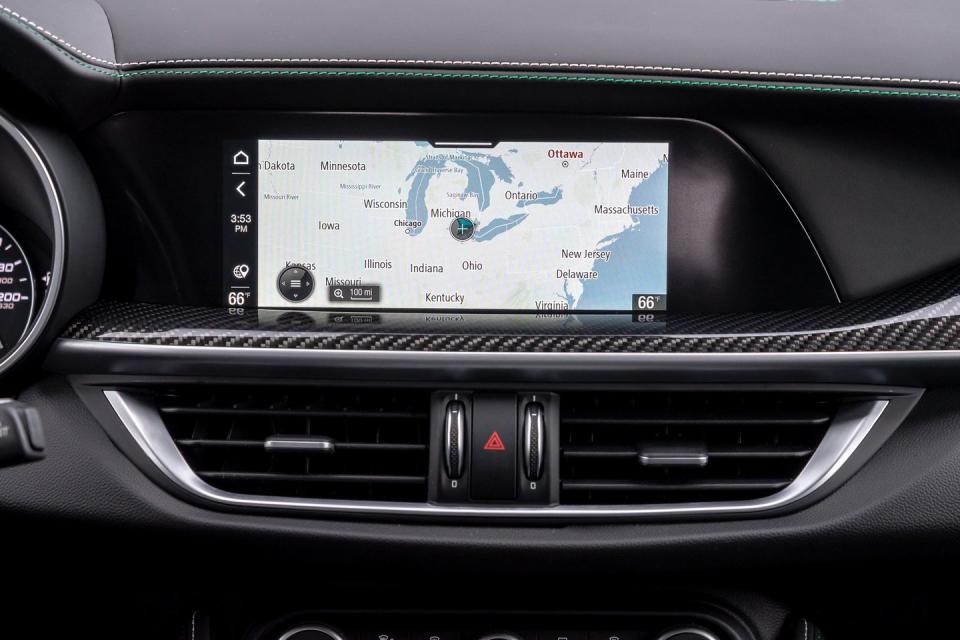
There are still some cheap-looking grained plastics on this Alfa's dash and doors, which are particularly unbecoming at our test vehicle's $94,095 as-tested price. But there are also high-quality touches, such as the white-and-green stitching—which brings the theme of the Quadrifoglio's cloverleaf badge inside the cabin—on the dash, doors, seats, and into the second row. The bolsters on the front seats remain large and firm. If you don't fit between them, you're going to be uncomfortable.
The lane-centering function is only available on major highways, and in our time with the car, the system lost the lane lines more frequently than other similar systems. To sense that the driver is paying attention, the steering wheel employs capacitive-touch sensors, which means that the driver's hands—or at least a couple fingers—must remain in contact with the wheel at all times. Remove them, and in less than 10 seconds the system escalates its warnings and then cancels the function altogether.
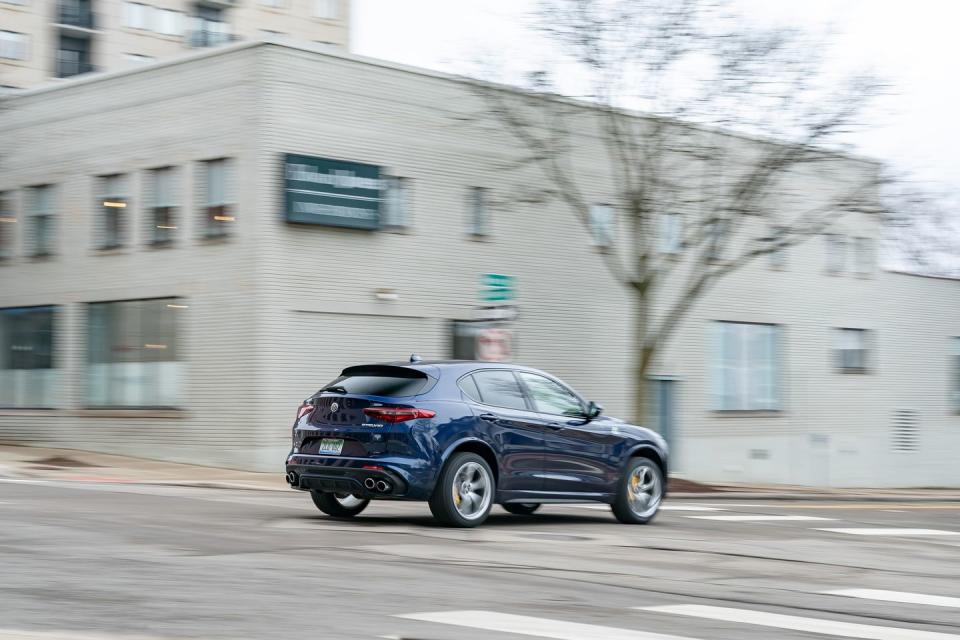
Quirky yet Wonderful
As before, one of our biggest complaints about the Stelvio's driving experience is the difficult-to-modulate by-wire braking system. Quick stabs at the pedal are met with a slight delay, and it's easy to get more deceleration than desired. It's also difficult to be smooth when creeping along at low speeds, where the pedal sinks to the floor. And there's no feedback in the pedal. If you push hard enough to break traction, there's a tiny "ABS ACTIVE" message that appears in the cluster. But you're far more likely to feel the shudders of undulating grip at the corners than see the message.
When we resisted this Alfa's charms for a couple hours, we were able to average 21 mpg at a steady 75 mph. But then we looked back longingly at its deep blue sheetmetal and gorgeously spindly 20-inch wheels, $8000 carbon-ceramic brake rotors, and $500 yellow calipers and dove headlong back into a 13-mpg orgy of 7000-rpm upshifts and fast-as-you-dare corners. That's our—and the Stelvio Quadrifoglio's—happy place.
You Might Also Like

 Yahoo Autos
Yahoo Autos 